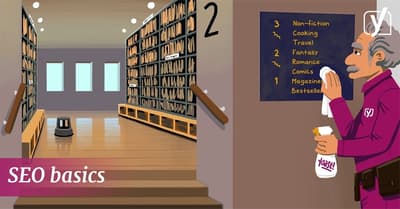What is the difference between tags and categories?

Tags and categories help us structure our content. You can often find these in the visual metadata at for instance blog posts, or in a list of clickable links in the sidebar of a website. Tags are sometimes represented as a tag cloud, although most websites refrain from using that element these days. There is a clear difference between tags and categories, but a lot of users mix them up. Now in most cases, that won’t matter for the end user. But for instance, in WordPress, there are some benefits to using categories for certain segmentations and tags for others. Here, I’d like to explain the difference between tags and categories.
WordPress taxonomies
WordPress uses taxonomies for content grouping. The most common, default taxonomies in WordPress are categories and tags, but it’s also possible to create a custom taxonomy. We have written about these custom taxonomies before, so for background information, please read the post “What are custom taxonomies?“
A taxonomy can be defined as “orderly classification” (Source: Merriam Webster). This indicates some hierarchy or structure, which often goes into categories. In WordPress, categories can be parents or children of each other. Often, tags in WordPress don’t have that structure and are often used quite randomly. If you don’t control how you add tags to posts, you will probably end up with a huge number of tags on your website. The downside of this is that a lot of tags are used only once, which makes the tag page the same as the post where you added the tag. This may create duplicate content or at least thin content.
What’s the difference between tags and categories?
According to the WordPress definition, categories allow you to broadly group post topics, while you can use tags to describe your post in more detail.
In an ideal world, we would use categories to group the content on your website into — say — eight to ten global segments. On our blog, these segments are for instance Analytics, Content SEO, eCommerce and Technical SEO. By maintaining a limited set of categories, you can keep your website, and your content focused. Now, of course, you can dissect the content even further, going to more particular groupings. For that, you should use tags.
The fact that categories can be hierarchical means that there’s a bit more content structure to be made with just categories if that’s what you are looking for. You can have a group of posts about trees, and have a child category or subgroup about elms. Makes sense, right? It also means that you can have URLs like /category/trees/elms, which displays that structure right in the URL already. You can’t do this with tags. The tag in this example could be “Boston.” It’s unrelated to the tree’s characteristics but could indicate where for instance a photo of an elm in that post is located.
At least one category per post is required
There is one more difference between tags and categories in WordPress: you need to add at least one category to a post. If you forget to do so, the post will be added to the default category. That would be “Uncategorized” unless you set a default category in WordPress at Settings > Writing:

Please do so, as you will understand the default “Uncategorized” makes no sense to your readers. It looks like poor maintenance, right? With tags, you don’t have this issue, as tags are not obligated at all. You could even decide to refrain from using tags until you need them and even then perhaps use a custom taxonomy instead. In that case, you will have that second layer of segmentation without the limitation of tags. I hope that clarifies the difference between tags and categories!

